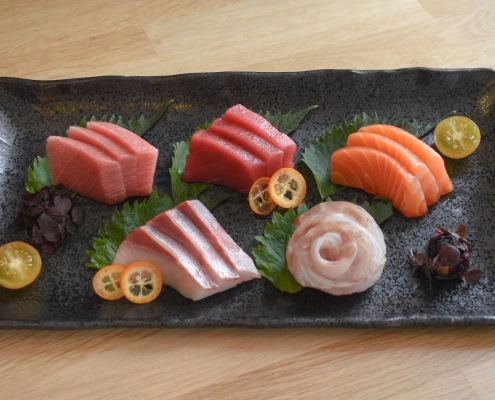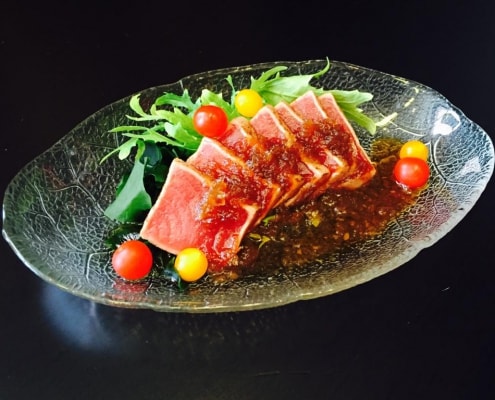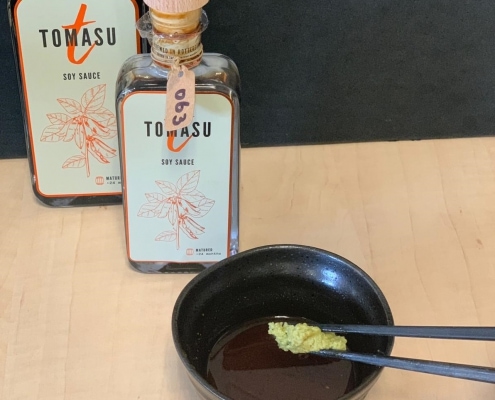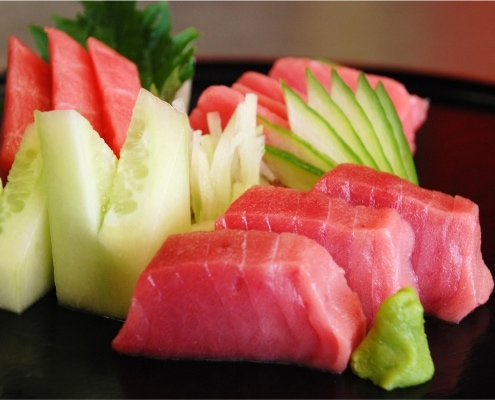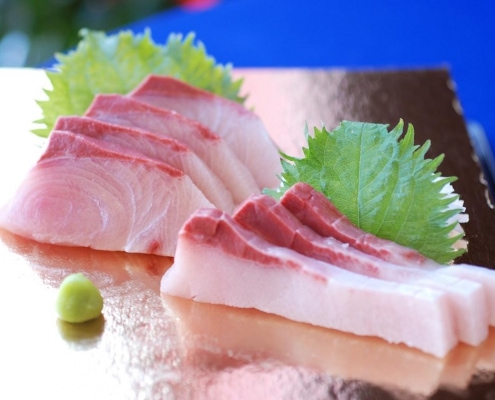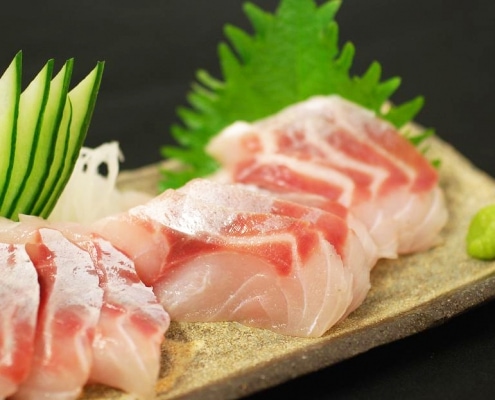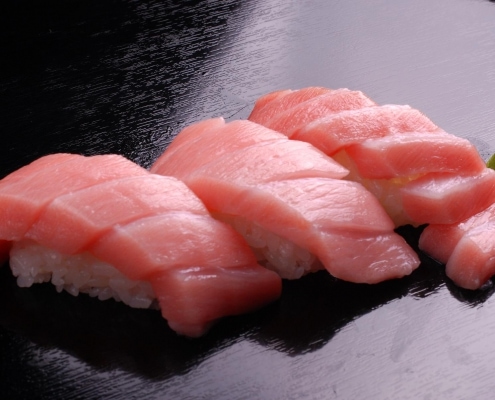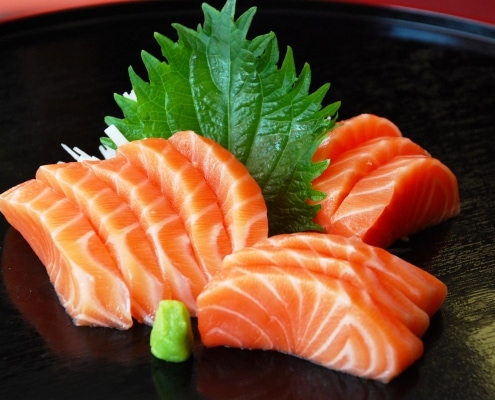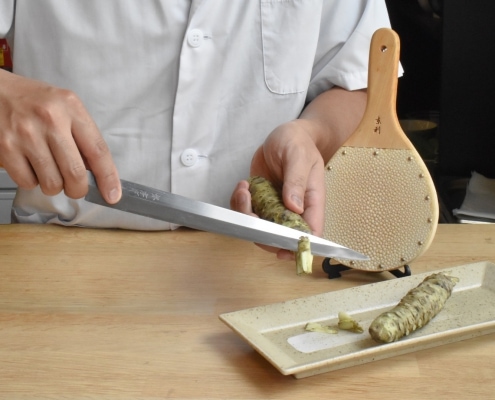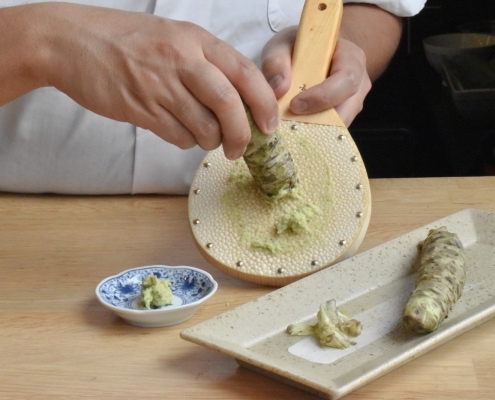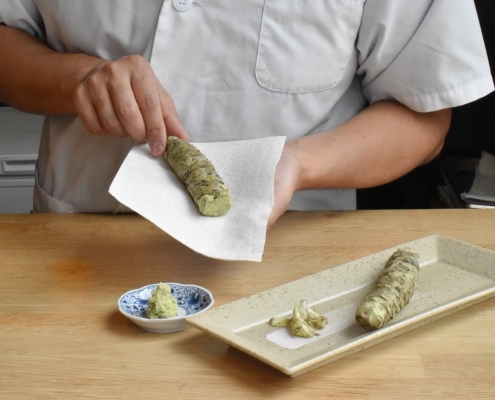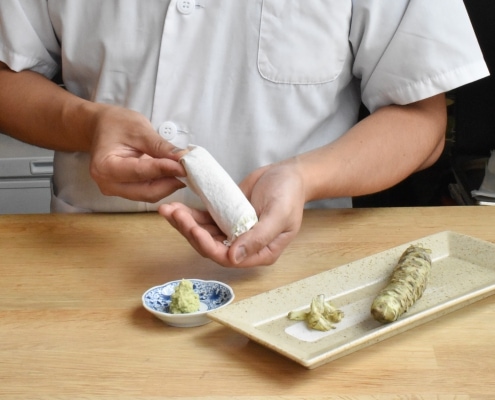Enjoy the Hokkai Sashimibox
You will find all the recipes and preparation methods of the products below. Meshiagare!
Basic preparation for sashimi
- Defrost the sashimi for half an hour in cold water.
- Remove the package and dry the fish with kitchen paper.
- Cut the fish in pieces and eat raw with soy sauce and wasabi.
Chef’s Sashimi Sauce
- Defrost the tuna in ice water for half an hour.
- Heat 100 ml soy sauce, 30 ml mirin, 20 gr sugar, 100 gr grated onion and 10 gr pressed garlic on medium heat for about 5 minutes.
- Let the sauce cool down in the fridge.
- Bake all sides of the tuna shortly on high temperature in a little bit of oil.
- Let the baked tuna cool down in ice water and quickly dry with kitchen paper.
- Cut the tuna in pieces and pour the sauce on top.
Chef’s Wasabi Sauce
- Heat 100 ml soy sauce and 30 ml mirin on medium heat for about 5 minutes.
- Let the sauce cool down in the fridge.
- Mix 20 gr freshly grated wasabi through the sauce.
- Mix 100 ml salad oil through the sauce until it thickens.
- Cut the sashimi in pieces. Watch this video for chef Ohtawara’s explanation on cutting sashimi.
- Put the pieces on a plate and pour the sauce on top.
Chef Kuniyoshi Ohtawara shows us how to prepare the perfect sashimi platter with the Hokkai Sashimibox.
Maguro Akami (lean fat tuna)
Akami in Japanese literally means red meat. In this case, it refers to the part of the tuna cut from the upper part of the back and the inside of the fish. The Maguro Akami has a deep red color and is low-fat, yet very tasty.
Note: once tuna is caught, it quickly loses its redness and will tan slightly. This is not a sign that the fish is not fresh, it is at most a sign of oxygen deficiency that causes the iron in the proteins to oxidize. We advise to consume the tuna within two weeks of purchase; this is not the external THT date.
Buri Sashimi (yellowtail)
Buri Sashimi is a valued product in Japan. Our Buri is grown in the waters of Japan itself and contains a lot of fat. This fish is also very durable. Buri is perfect for sushi and sashimi.
Suzuki Sashimi (seabass)
Our Suzuki Sashimi is sweet and slightly firm in texture. This makes it a perfect fish product for sushi and sashimi. Drizzle it with a dash of lemon juice and sea salt, instead of soy sauce. You don’t know what you’re tasting!
Maguro O Toro (fatty tuna)
O Toro is the most excellent part of the bluefin tuna and is obtained from the fat belly part of the tuna. Maguro O Toro is so soft and creamy that it will literally melt in your mouth.
Note: once tuna is caught, it quickly loses its redness and will tan slightly. This is not a sign that the fish is not fresh, it is at most a sign of oxygen deficiency that causes the iron in the proteins to oxidize. We advise to consume the tuna within two weeks of purchase; this is not the external THT date.
Sake Sashimi (salmon)
Sake Sashimi is freshly frozen salmon with a soft, rich taste.
How to grate a wasabi root
Step 1. Cut the edges of the wasabi root with a sharp knife.
Step 2. Grate the root very carefully on the grater at an angle of about 45 degrees.
Tip from our wasabi farmer: cover a new wasabi grater with a layer of aluminum foil. The teeth of the grater are very sharp, which causes the wasabi to lose its sharpness. A layer of aluminum foil prevents this.
Step 3. Once you are finished, clean the tip of the root with kitchen paper.
Step 4. Store the wasabi root wrapped in kitchen paper in the refrigerator. The root can be kept chilled for a maximum of two weeks. After a while some brown spots may appear on the outside of the root, you can just cut it off and keep using.
Have you made something tasty with the Hokkai Sashimibox? We like to see your creations as a home cook on social media using the hashtag #hokkaiathome
